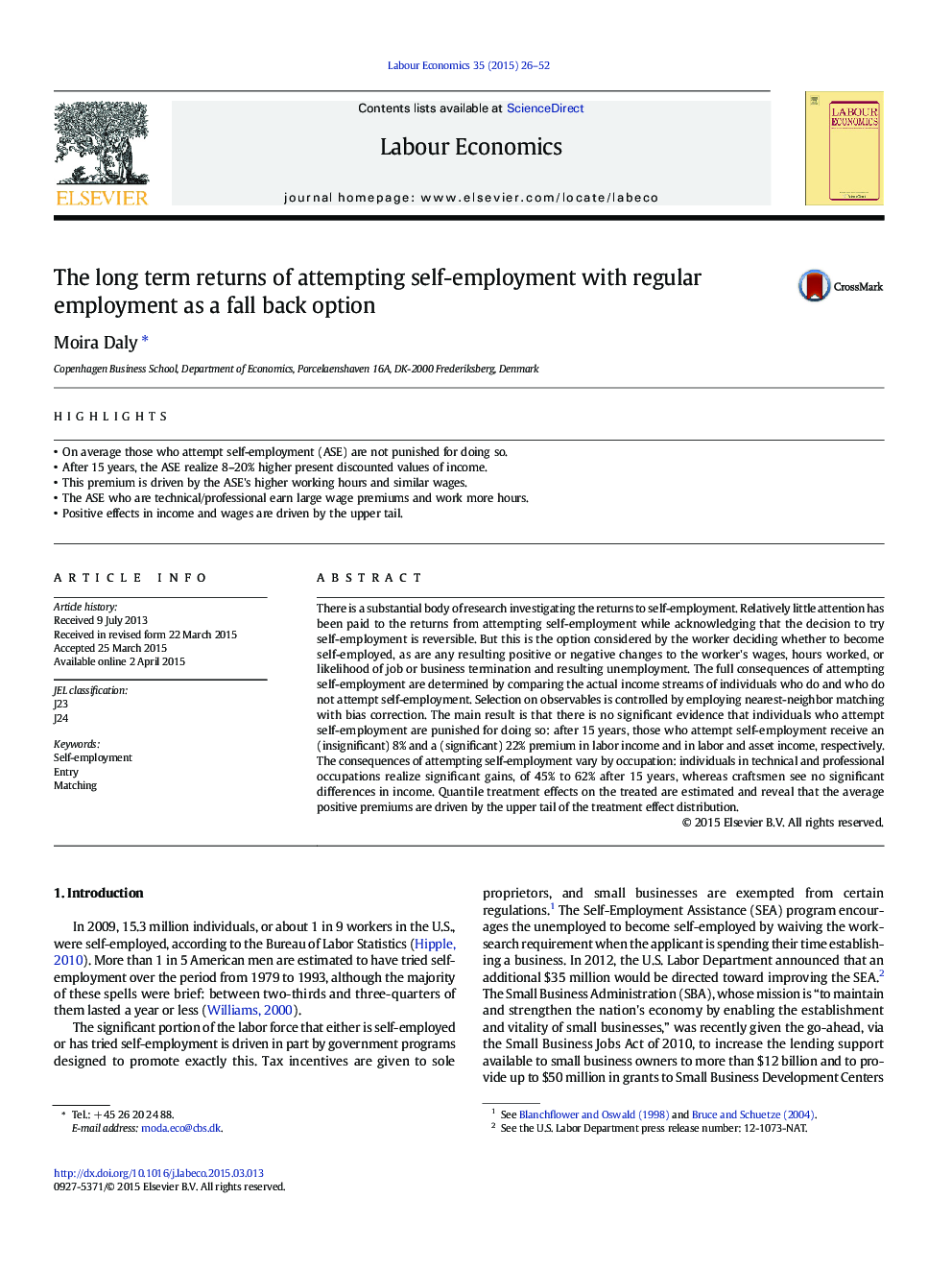| کد مقاله | کد نشریه | سال انتشار | مقاله انگلیسی | نسخه تمام متن |
|---|---|---|---|---|
| 971743 | 1479702 | 2015 | 27 صفحه PDF | دانلود رایگان |
• On average those who attempt self-employment (ASE) are not punished for doing so.
• After 15 years, the ASE realize 8–20% higher present discounted values of income.
• This premium is driven by the ASE's higher working hours and similar wages.
• The ASE who are technical/professional earn large wage premiums and work more hours.
• Positive effects in income and wages are driven by the upper tail.
There is a substantial body of research investigating the returns to self-employment. Relatively little attention has been paid to the returns from attempting self-employment while acknowledging that the decision to try self-employment is reversible. But this is the option considered by the worker deciding whether to become self-employed, as are any resulting positive or negative changes to the worker's wages, hours worked, or likelihood of job or business termination and resulting unemployment. The full consequences of attempting self-employment are determined by comparing the actual income streams of individuals who do and who do not attempt self-employment. Selection on observables is controlled by employing nearest-neighbor matching with bias correction. The main result is that there is no significant evidence that individuals who attempt self-employment are punished for doing so: after 15 years, those who attempt self-employment receive an (insignificant) 8% and a (significant) 22% premium in labor income and in labor and asset income, respectively. The consequences of attempting self-employment vary by occupation: individuals in technical and professional occupations realize significant gains, of 45% to 62% after 15 years, whereas craftsmen see no significant differences in income. Quantile treatment effects on the treated are estimated and reveal that the average positive premiums are driven by the upper tail of the treatment effect distribution.
Journal: Labour Economics - Volume 35, August 2015, Pages 26–52
